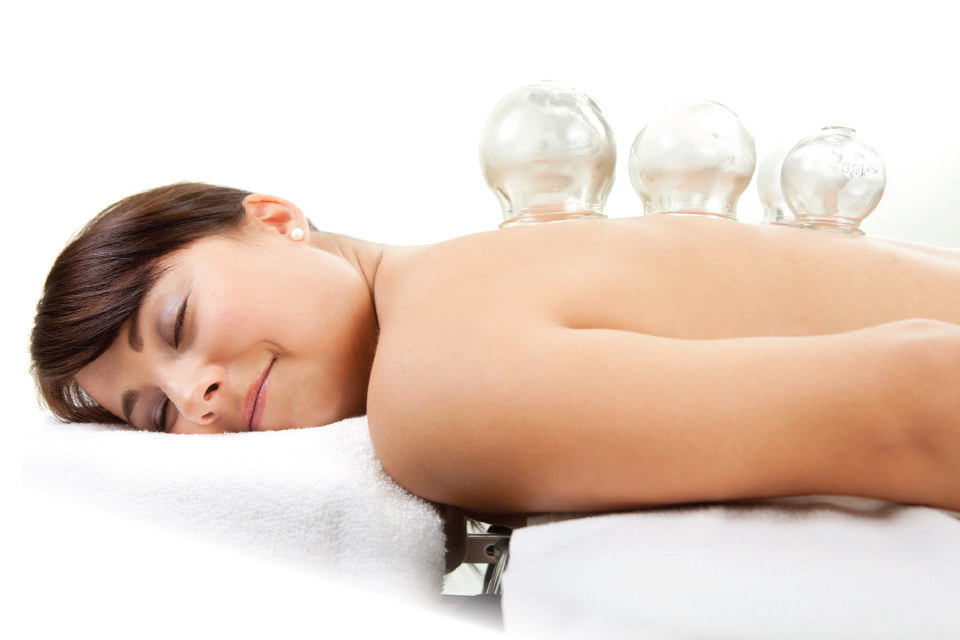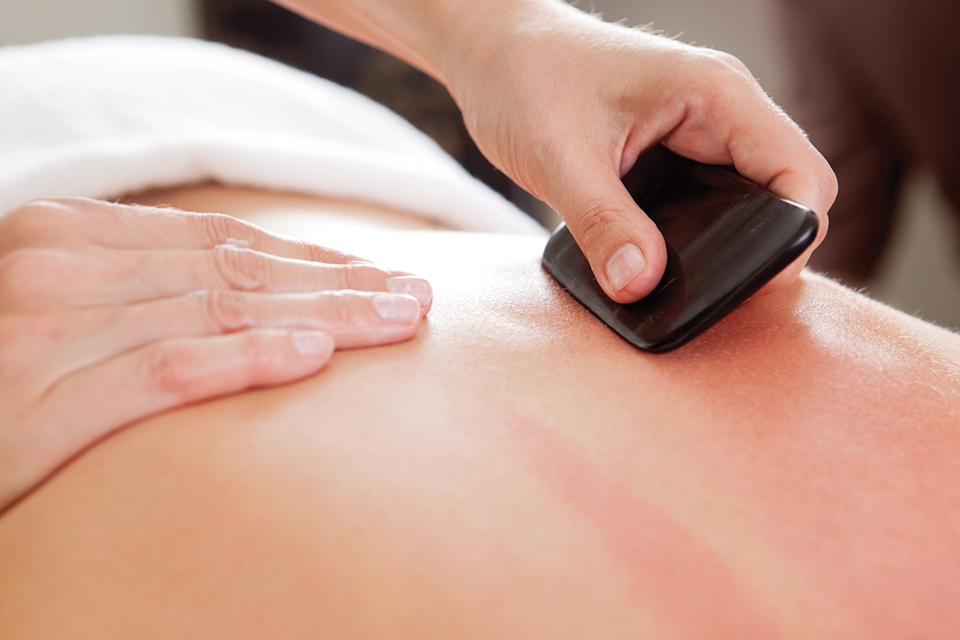Hurts So Good

From kinesio-taping to more recently cupping, Olympians test the waters of new therapy designed to give them that competitive edge. So, when our most decorated swimmer, Michael Phelps, sports the hickey-mark calling card of cupping, the rest of us pay attention. As an acupuncturist, I received a flood of calls and texts about the polka-dotted swimmer. My clients, already aware of the benefits of cupping, felt relieved at having less explaining to do about why their backs and shoulders would occasionally look like they’ve been attacked by an octopus after an acupuncture visit.
Cupping
So what is cupping? It’s basically using suction and cups to relieve muscle pain. The cups can be made of plastic, glass, bamboo, or silicon, and suction is created through pressure, pump or heat. I’m a personal fan of fire cupping, which involves using a flame to create suction and also looks really cool. In traditional Chinese medicine theory, muscle pain and soreness are caused by poor circulation, mostly due to overuse and injury. This lack of circulation doesn’t allow “new” and nutrient-rich blood to flow properly through muscle tissue. Cupping is thought to pull that “old”, stagnant blood out of the muscle layer and into the more superficial skin layers so it can be circulated out and “new”, fresh blood can be circulated in. “New” blood means more tissue repair, reduced pain, and faster healing. For really old or severe muscle pain, multiple sessions may be needed, but most people notice that as their body heals, the cupping marks produce less intense marks and heal much faster—evidence that the body’s circulation is back to optimal levels.
While the idea of “old” versus “new” blood can sound archaic, the idea of moving blood and tissue around to improve circulation is easy to grasp. One recent biomedical theory suggests that cupping also helps by releasing the body’s fascia. Fascia is a webbing that connects all our organs and muscles and bones. It can get stuck and knotted, so cupping can help pull apart adhesions in the many layers of fascia that we have. When our fascia is unstuck, we move more freely. Cupping can feel a little pinchy and intense, but for those of you who love a deep tissue massage, it will be a cakewalk. I think my favorite description of the cupping sensation came from a patient who said it felt like a “cold chip clip” on her back. While cupping can leave some temporary soreness and unsightly marks, its pain relief and improved mobility are pretty instantaneous, which is why it makes such a useful tool for the athlete and desk warrior alike.

Gua Sha
While it does excite me to see the growing interest first in acupuncture and now in cupping—thanks to athletes, celebrities, and of course, the fact that these techniques work—there is so much more that traditional Chinese medicine can offer. One therapy in particular is Gua sha. Gua sha is Chinese for literally “raising a rash.” It’s commonly and more scarily known in English as scraping. It uses the theory of counteraction to reduce muscle pain and improve mobility with immediate effects. Counteraction works by distracting the body from its initial source of pain, allowing that area to reduce in inflammation and start to heal.
Gua sha involves using a tool with a curved smooth surface to repeatedly scrape an area till a dark red or purple rash pops up. While it can be intense, most people find it relaxing. The great thing about Gua sha is that it can be done almost anywhere on the body, in places that are difficult or painful for cupping to reach, like the neck area, joints, or the forearms. It takes minutes to do and the unsightly marks tend to fade within two to four days, cupping takes one to two weeks. Most commonly, I use Gua sha for shoulder issues, tennis elbow and the modern phenomenom: tech neck. It is a great complement to cupping and acupuncture, and I often combine all three into treatment sessions. And like cupping, while it’s usually more relaxing and efficient to have it done professionally, it is a form of homegrown medicine, so it is possible to do it yourself for on-the-go care.
In Asia, it’s not uncommon to see people of all ages at the beach or waterpark with Gua sha and cupping marks. I’ve seen them here, running around Lady Bird Lake, so it looks like the good word is spreading. Who knows—maybe we’ll even see them decorating the backs of our Olympians in Tokyo.






